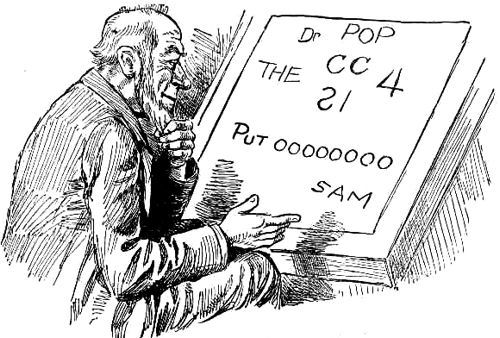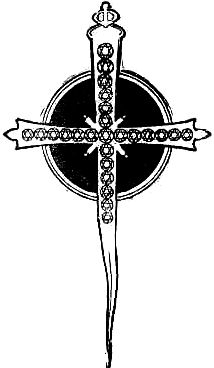



I HAVE JUST RECEIVED a puzzling communication from that boy of mine, who is studying at an agricultural college in New Jersey, and the reading of the same has bothered me and Mandy considerably. He is making great progress he tells us, nevertheless, some of his reports are so mysterious and baffling that I am compelled to ask the assistance of our clever puzzlists to decipher this one. It strikes me as being what in the old days we used to term a rebus puzzle, which conceals some sort of a cryptographic message or other, which can be guessed or read, if you are smart enough to master it.
He has such funny ways of writing everything that he keeps his friends guessing all the time. He wrote Utica. UTK and Tennessee XEC, and Ohio he described as oO, although by transposing them to Oo he says it means owe nothing, all of which is mentioned to assist you in deciphering his cryptographic letter, so, if you have XAIOOT you will find his XAIOOT meaning.
All of which is suggested by Dr. Whewell’s letter to a young lady.
“You O a O, but I O thee,
O, O no O, but O, O me,
& O, let my O no O go,
But give OO I O you so!”
Our young folks have come nobly to my aid in deciphering that crypto-gramic letter from my boy on the farm, and tell me that instead of being a Ku Klux notice from the Molly McGuires, it is merely a statement that “the season is backward for potatoes! “The cc on is (backward) 4 put oooooooo (eight o’s). All of which is a great relief to an anxious parent.
2. The Great Diamond Robbery.
In one of Dumas’ narratives of noted criminals mention is made of a certain jeweler of the Rue Faubourg St. Honore, who during a long career of crime had robbed many ladies of distinction of their finest gems, either by substituting imitations or by changing the positions of the stones so that their abstractions would not be detected.
To illustrate the clever rascal’s mode of procedure let us look at the accompanying antique pin containing twenty-five diamonds. The lady who owned it had been accustomed to count down from the top and branch out from the center, right, left or down so as to always count thirteen.
She had this particular piece of jewelry repaired by the noted criminal referred to, and remembered showing her method of counting the diamonds, which the polite jeweler again called her attention to when returning the same. For many years afterwards she continued to count them in the same way, always finding the thirteen to be correct as before, and yet two of the finest gems had been purloined! How did the ingenious thief conceal the crime?
Here is a sketch of the antique pin with the twenty-five diamonds as it was when the jeweler received it:

The second arrangement of the diamonds, with two gems missing, is as follows:

3.
Why is a man who never bets as bad as a gambler? Because he is no bettor (better).
Why is the root of the tongue like a dejected man? Because it‘s down in the mouth.
What is that which we often return, but never borrow? Thanks.
[Page 92]